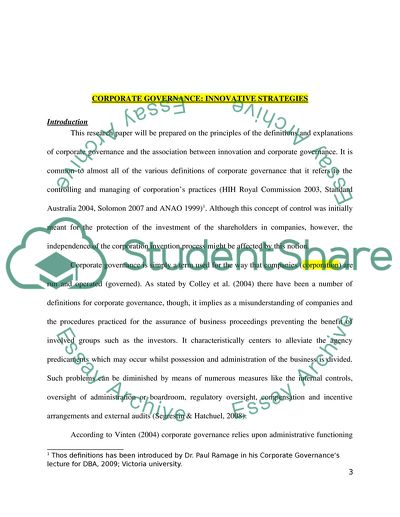Cite this document
(The Effect of Corporate Governance on Innovation Strategy Research Paper, n.d.)
The Effect of Corporate Governance on Innovation Strategy Research Paper. Retrieved from https://studentshare.org/social-science/1728317-the-effect-of-corporate-governance-on-innovation-strategy-the-role-of-management-diversity-on-the-quality-and-quantities-of-innovative-output
The Effect of Corporate Governance on Innovation Strategy Research Paper. Retrieved from https://studentshare.org/social-science/1728317-the-effect-of-corporate-governance-on-innovation-strategy-the-role-of-management-diversity-on-the-quality-and-quantities-of-innovative-output
(The Effect of Corporate Governance on Innovation Strategy Research Paper)
The Effect of Corporate Governance on Innovation Strategy Research Paper. https://studentshare.org/social-science/1728317-the-effect-of-corporate-governance-on-innovation-strategy-the-role-of-management-diversity-on-the-quality-and-quantities-of-innovative-output.
The Effect of Corporate Governance on Innovation Strategy Research Paper. https://studentshare.org/social-science/1728317-the-effect-of-corporate-governance-on-innovation-strategy-the-role-of-management-diversity-on-the-quality-and-quantities-of-innovative-output.
“The Effect of Corporate Governance on Innovation Strategy Research Paper”, n.d. https://studentshare.org/social-science/1728317-the-effect-of-corporate-governance-on-innovation-strategy-the-role-of-management-diversity-on-the-quality-and-quantities-of-innovative-output.


